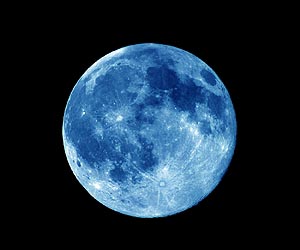Earth's Moon could be younger than previously thought, according to new research from a team that includes Carnegie's Richard Carlson and former-Carnegie fellow Maud Boyet. Their work will be published online in Nature on August 17.
 The prevailing theory of our Moon's origin is that it was created by a giant impact between a large planet-like object and the proto-Earth.
The prevailing theory of our Moon's origin is that it was created by a giant impact between a large planet-like object and the proto-Earth.
The energy of this impact was sufficiently high that the Moon formed from melted material that was ejected into space. As the Moon cooled, this magma solidified into different mineral components.
The Astronomical Research Center (A.R.C) mentioned that Analysis of lunar rock samples thought to have been derived from the original magma has given scientists a new estimate of the Moon's age.
According to this theory for lunar formation, a rock type called ferroan anorthosite, or FAN, is the oldest of the Moon's crustal rocks, but scientists have had difficulty dating FAN samples.
The research team, led by Lars E. Borg of the Lawrence Livermore National Laboratory, included Carlson of Carnegie's Department of Terrestrial Magnetism, Boyet-- now at Universite Blaise Pascal--and James N. Connelly of the University of Copenhagen. They used newly refined techniques to determine the age of a sample of FAN from the lunar rock collection at the NASA Johnson Space Center.
The team analyzed the isotopes of the elements lead and neodymium to place the FAN sample's age at 4.36 billion years. This figure is significantly younger than earlier estimates of the Moon's age that range as old as the age of the solar system at 4.568 billion years.
The new, younger age obtained for the oldest lunar crust is similar to ages obtained for the oldest terrestrial minerals--zircons from western Australia--suggesting that the oldest crusts on both Earth and Moon formed at approximately the same time, and that this time dates from shortly after the giant impact.
This study is the first in which a single sample of FAN yielded consistent ages from multiple isotope dating techniques. This result strongly suggests that these ages pinpoint the time at which the sample crystallized.
"The extraordinarily young age of this lunar sample either means that the Moon solidified significantly later than previous estimates, or that we need to change our entire understanding of the Moon's geochemical history," Carlson said.